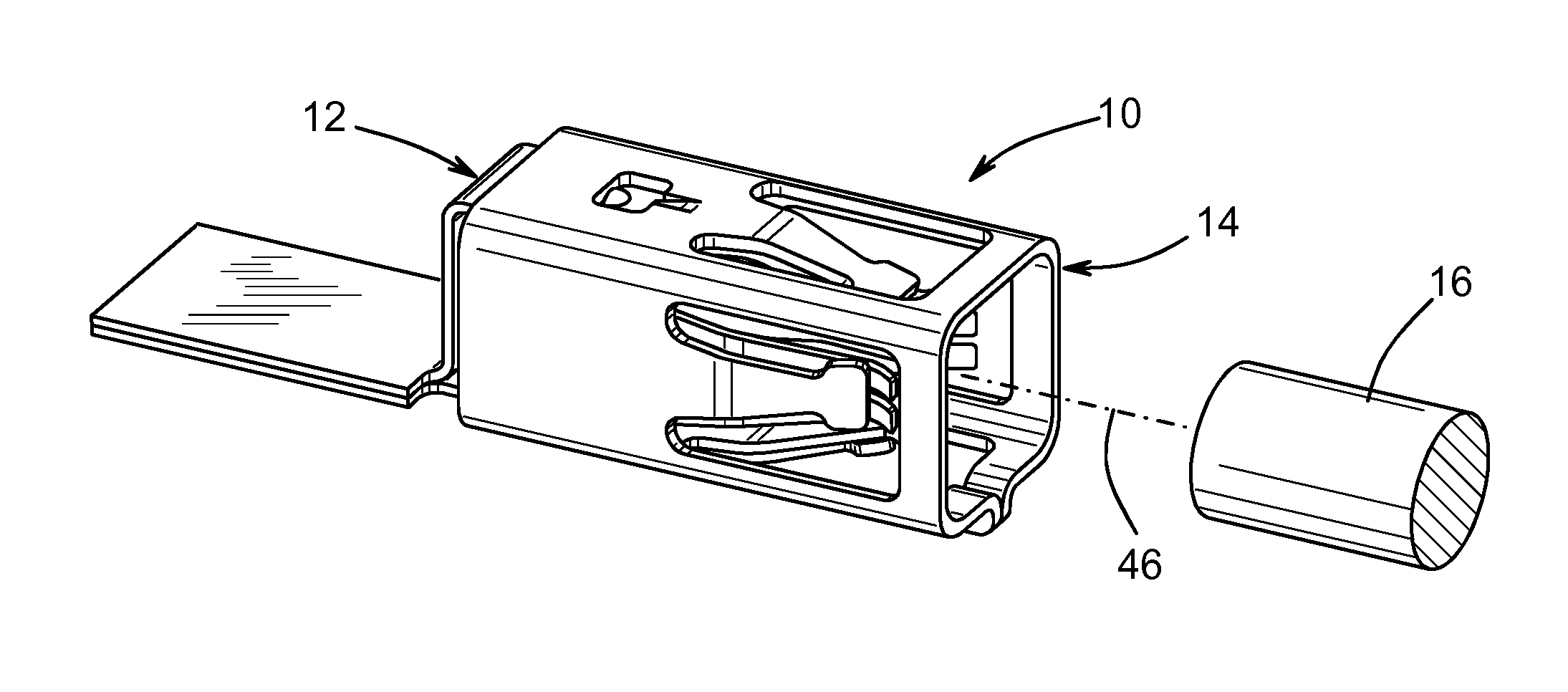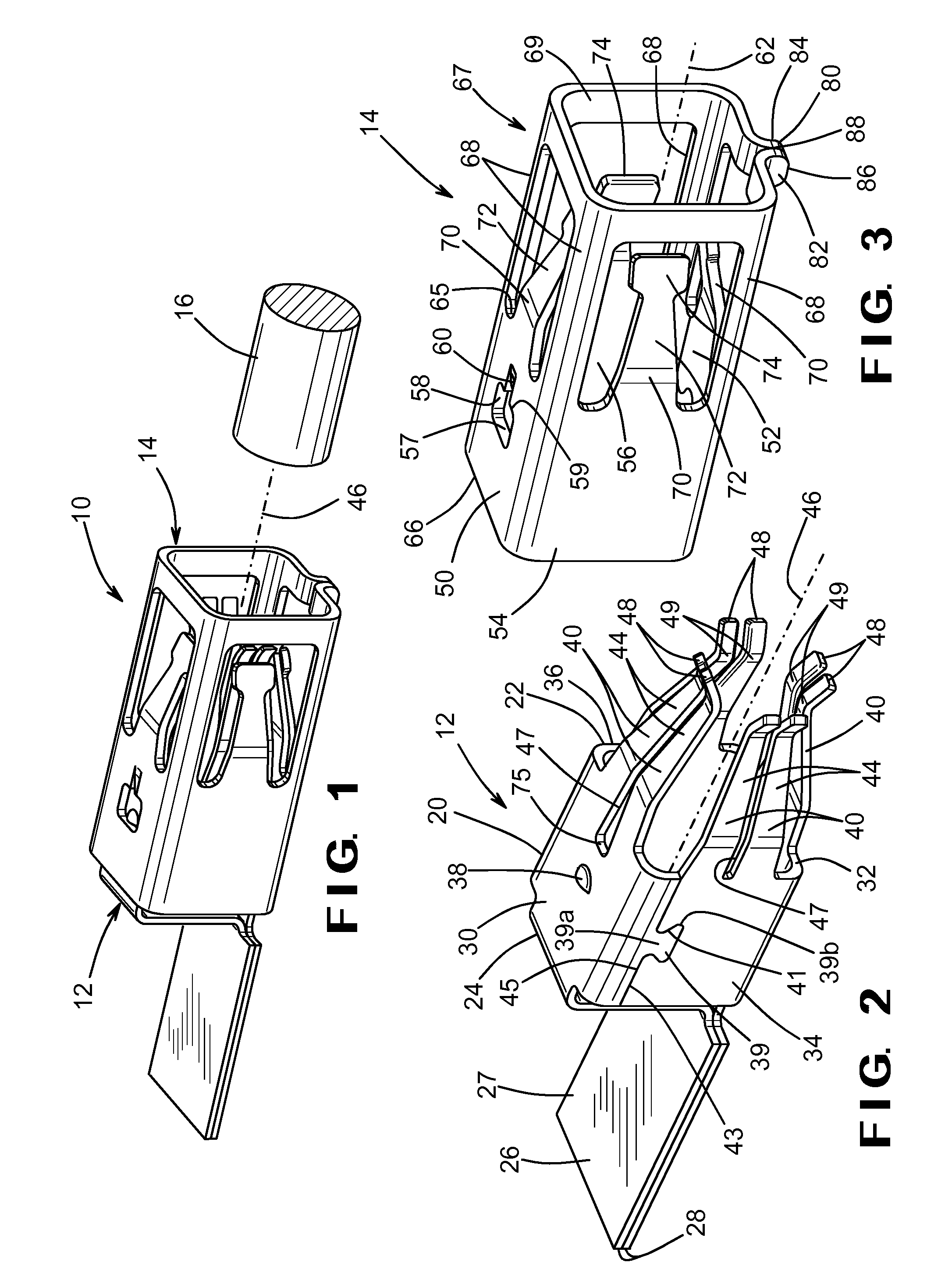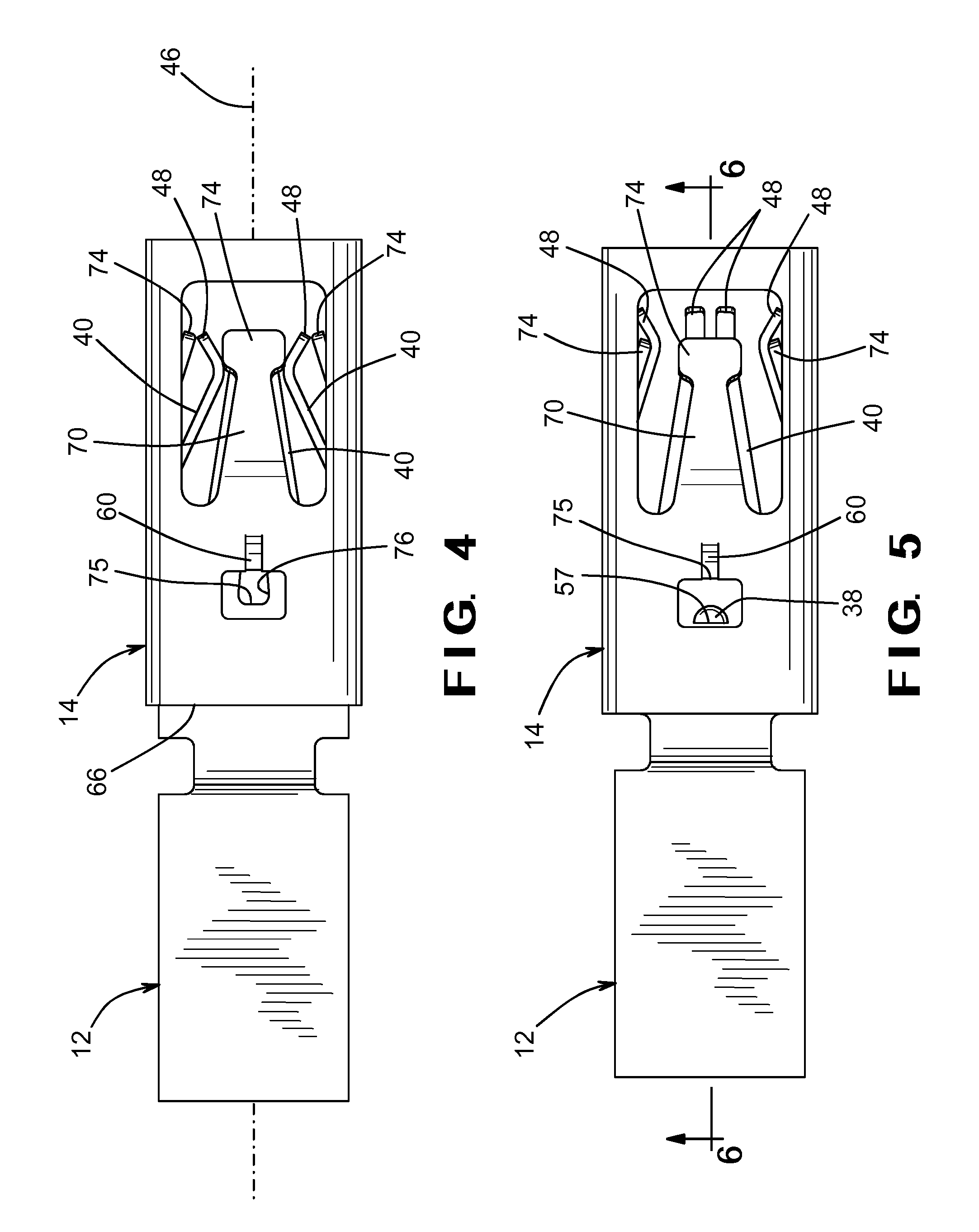Method of Assembling An Electrical Terminal Assembly
a technology of electrical terminals and assembly methods, applied in the field of electrical terminals, can solve the problems of loss of spring force, copper is susceptible to relaxation, and the overall contact area is affected
- Summary
- Abstract
- Description
- Claims
- Application Information
AI Technical Summary
Benefits of technology
Problems solved by technology
Method used
Image
Examples
Embodiment Construction
[0026]Referring now to the drawings, there is illustrated in FIG. 1 an electrical terminal assembly, indicated generally at 10. The electrical terminal assembly 10 includes a base, indicated generally at 12, and a spring member, indicated generally at 14. In an assembled condition of the electrical terminal assembly 10, the base 12 is inserted within the spring member 14, as shown in FIG. 1. In the embodiment shown, the electrical terminal assembly 10 has a rectangular or box-shape such that both the base 12 and the spring member 14 have four sides, as will be described below. The widths of the each of the sides may be equal or unequal. It should be understood that the base 12 and the spring member 14 may be shaped other than a four sided box, as shown in the figures. For example, the base 12 and the spring member 14 may have three sides, six sides, or any suitable number of sides. Alternatively, the base 12 and the spring member 14 may be cylindrical in shape. In a preferred embodi...
PUM
| Property | Measurement | Unit |
|---|---|---|
| axial movement | aaaaa | aaaaa |
| yield strength | aaaaa | aaaaa |
| conductivity | aaaaa | aaaaa |
Abstract
Description
Claims
Application Information
 Login to View More
Login to View More - R&D
- Intellectual Property
- Life Sciences
- Materials
- Tech Scout
- Unparalleled Data Quality
- Higher Quality Content
- 60% Fewer Hallucinations
Browse by: Latest US Patents, China's latest patents, Technical Efficacy Thesaurus, Application Domain, Technology Topic, Popular Technical Reports.
© 2025 PatSnap. All rights reserved.Legal|Privacy policy|Modern Slavery Act Transparency Statement|Sitemap|About US| Contact US: help@patsnap.com



